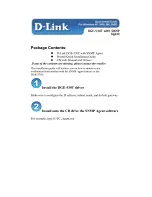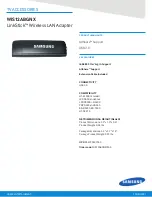
Scenario 3:1 – Multi-Enclosure stacking, with Multiple Simple vNets, Redundant Uplinks and LACP (2 Enclosures) 171
Scenario 3:1 – Multi-Enclosure stacking, with
Multiple Simple vNets, Redundant Uplinks and
LACP (2 Enclosures)
Overview
This simple configuration uses the Virtual Connect vNet using uplinks from TWO different enclosures
within the stacked Virtual Connect domain, which is referred to a Multi-enclosure stacking (ME). The vNet
is the simplest way to connect Virtual Connect to a network and server. In this scenario, the upstream
network switches connect the vNet to a pair of ports on two of the VC modules, positioned in Bay1 of
enclosure 1 and Bay 2 of enclosure 2.
As there will be a pair of uplinks from each VC module to their respective switches, LACP would need to
be configured on the upstream switch ports. It is also assumed these switch ports are configured as
Access ports. However, if the switch ports were configured as trunk ports, presenting multiple VLANs to
the vNet, Virtual Connect would simply pass the tagged frames on to the server, unchanged with tags
intact, however, the VC Domain would need to be configured in Tunneled mode and VLAN tunneling
would need to be enabled for thses vNets.
When configuring Virtual Connect, we can provide several ways to implement network fail-over or
redundancy. One option would be to connect uplinks for a vNet from multiple VC modules; those uplinks
would connect from different Virtual Connect modules within the enclosure stack and could then connect
to the same upstream switch or two different upstream switches, depending on your redundancy needs.
An alternative would be to configure TWO separate vNets, each with a set of uplinks configured. Each
option has its advantages and disadvantages. This scenario will review use TWO separate vNets, which
will provide two active paths to the network.
In addition, several vNets can be configured to support the required networks to the servers within the
BladeSystem enclosure. These networks could be used to separate the various network traffic, such as
iSCSI, backup, VMotion from production network traffic.
Requirements
In order to implement this scenario, two HP BladeSystem c7000 enclosures with one or more server blade
and TWO Virtual Connect Ethernet modules, installed in Bays 1& 2 are required. In addition, we will
require ONE or TWO external Network switches. As Virtual Connect does not appear to the network as
a switch and is transparent to the network, any standard managed switch will work with Virtual Connect.
Note: In order to implement Virtual Connect enclosure stacking, the enclosure that will form the primary or
initial VC Domain must be configured with either VC-F or VC Flex-10 modules in Bays 1 and 2; VC-E
modules are not supported in Bays 1 and 2 of the primary VC enclosure, but VC-E modules could be used
in other bays, or Bays 1&2 in other enclosures in the stack, just not the primary enclosure.
















































